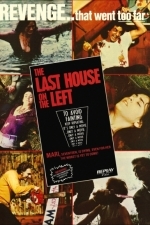Search
Search results
Matthew Krueger (10051 KP) rated The Last House on the Left (1972) in Movies
Sep 3, 2020
To Avoid Fainting Keep Repeating...Its Only A Movie
The Last House on the Left- was wes's directoral debut and what a start. Its a disturbing, psychological, graphic, exploitation horror film.
The plot: Teenagers Mari (Sandra Cassel) and Phyllis (Lucy Grantham) head to the city for a concert, then afterward go looking for drugs. Instead, they find a gang of escaped convicts who subject them to a night of torture and rape. The gang then kills the girls in the woods, not realizing they're near Mari's house. When they pose as salesmen and are taken in by Mari's mother (Cynthia Carr) and father (Gaylord St. James), it doesn't take the parents long to figure out their identities and plot revenge.
Wes Craven, who had no money at the time, was put on the job of synchronizing dailies for Cunningham's re-shoot. He soon began editing the film with Cunningham. He soon began editing the film with Cunningham and they became good friends. Hallmark bought the film for $10,000, and it was considered a "hit"; this prompted Hallmark to persuade them to make another film with a bigger budget, and gave them $90,000 to shoot a horror film.
This script, written under the title Night of Vengeance, has never been released; only a brief glimpse is visible in the featurette Celluloid Crime of the Century (a 2003 documentary on the making of the film).
The majority of the cast of The Last House on the Left were inexperienced or first-time actors, with the exception of Richard Towers, Eleanor Shaw, and Sandra Peabody who were all soap opera regulars and had prior film roles.
The film underwent multiple title changes, with its investors initially titling it Sex Crime of the Century. However, after test screenings were completed, it was decided to change the title to Krug and Company; however, this title was found to have little draw during test screenings. A marketing specialist who was an acquaintance of Cunningham's proposed the title The Last House on the Left. Craven initially thought the title was "terrible."
Due to its graphic content, the film sparked protests from the public throughout the fall of 1972 who called for its removal from local theaters.
Promotional material capitalized on the film's graphic content and divisive reception, featuring the tagline: "To avoid fainting, keep repeating 'It's only a movie' ..." advertising campaign. Under the Last House... title, the film proved to be a hit.
Though the film passed with an R-rating by the Motion Picture Association of America, director Craven claimed that on several occasions, horrified audience members would demand that theater projectionists destroy the footage, sometimes stealing the film themselves.
It is a distubing film but it is a excellet film by a horror icon.
The plot: Teenagers Mari (Sandra Cassel) and Phyllis (Lucy Grantham) head to the city for a concert, then afterward go looking for drugs. Instead, they find a gang of escaped convicts who subject them to a night of torture and rape. The gang then kills the girls in the woods, not realizing they're near Mari's house. When they pose as salesmen and are taken in by Mari's mother (Cynthia Carr) and father (Gaylord St. James), it doesn't take the parents long to figure out their identities and plot revenge.
Wes Craven, who had no money at the time, was put on the job of synchronizing dailies for Cunningham's re-shoot. He soon began editing the film with Cunningham. He soon began editing the film with Cunningham and they became good friends. Hallmark bought the film for $10,000, and it was considered a "hit"; this prompted Hallmark to persuade them to make another film with a bigger budget, and gave them $90,000 to shoot a horror film.
This script, written under the title Night of Vengeance, has never been released; only a brief glimpse is visible in the featurette Celluloid Crime of the Century (a 2003 documentary on the making of the film).
The majority of the cast of The Last House on the Left were inexperienced or first-time actors, with the exception of Richard Towers, Eleanor Shaw, and Sandra Peabody who were all soap opera regulars and had prior film roles.
The film underwent multiple title changes, with its investors initially titling it Sex Crime of the Century. However, after test screenings were completed, it was decided to change the title to Krug and Company; however, this title was found to have little draw during test screenings. A marketing specialist who was an acquaintance of Cunningham's proposed the title The Last House on the Left. Craven initially thought the title was "terrible."
Due to its graphic content, the film sparked protests from the public throughout the fall of 1972 who called for its removal from local theaters.
Promotional material capitalized on the film's graphic content and divisive reception, featuring the tagline: "To avoid fainting, keep repeating 'It's only a movie' ..." advertising campaign. Under the Last House... title, the film proved to be a hit.
Though the film passed with an R-rating by the Motion Picture Association of America, director Craven claimed that on several occasions, horrified audience members would demand that theater projectionists destroy the footage, sometimes stealing the film themselves.
It is a distubing film but it is a excellet film by a horror icon.
